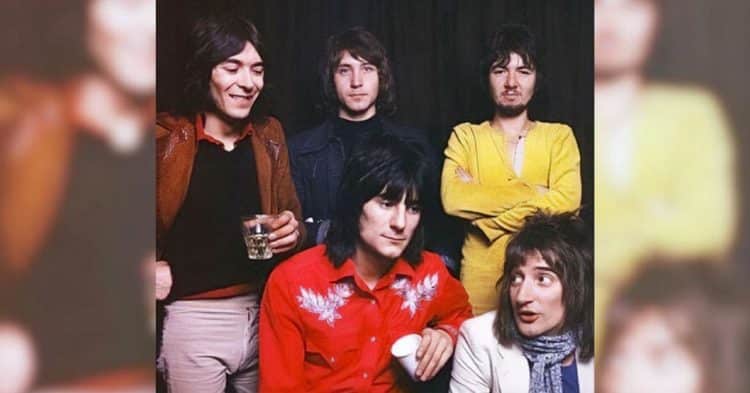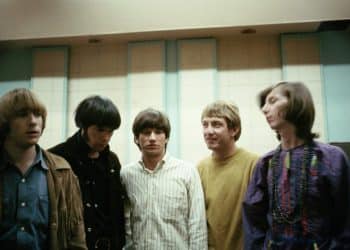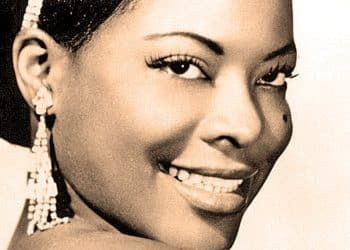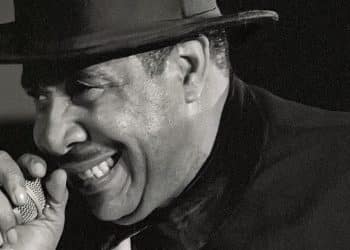When it comes to the golden era of rock music, few bands embody the spirit of rebellion and raw energy quite like The Faces. Formed in the late 1960s, this British rock group, fronted by the charismatic Rod Stewart and featuring the legendary Ron Wood, captivated audiences with their raucous sound and unforgettable charisma. Their music, a vibrant blend of rock, blues, and a touch of folk, resonated with a generation seeking authenticity and fun.
In this article, we delve into the top 10 most popular songs by The Faces, each a testament to their unique ability to fuse catchy melodies with heartfelt lyrics. From the infectious hooks that make you want to dance to the poignant ballads that tug at your heartstrings, these tracks have left an indelible mark on the rock scene. As we explore each song’s story and significance, you’ll discover why The Faces continue to be celebrated as one of the most influential bands of their time. Get ready to rediscover the anthems that defined an era and still resonate with fans old and new!
1. “Stay with Me” (1971)
“Stay with Me” is a quintessential anthem from The Faces, released in 1971, and remains one of their most iconic tracks. With its high-octane energy and unforgettable chorus, the song captures the wild, carefree spirit of the early ’70s. Rod Stewart’s raspy yet commanding vocals give life to the tale of a fleeting romance, embodying the youthful exuberance and reckless abandon of nightlife.
Ronnie Wood’s electrifying guitar riff serves as the backbone of the track, driving the song forward with raw power. Meanwhile, Ian McLagan’s rollicking piano lines add a bluesy swagger, creating a dynamic interplay between rock and rhythm-and-blues influences. The tight, punchy rhythm section, courtesy of Ronnie Lane’s bass and Kenney Jones’ drumming, provides a relentless groove that pulls listeners into the chaos and excitement of the song’s narrative.
The lyrics tell the story of a one-night stand with unapologetic honesty and a touch of humor, reflecting the carefree attitudes of the time. The playful tone, combined with the band’s infectious energy, makes it impossible not to sing along to the iconic chorus. Even decades later, “Stay with Me” continues to resonate, thanks to its universal themes of passion, uncertainty, and the thrill of living in the moment.
A staple in The Faces’ live performances, the song often became the centerpiece of their setlists, thrilling audiences with its raw energy and irresistible charm. Its timeless appeal has cemented its place as a rock-and-roll classic, ensuring that “Stay with Me” remains as fresh and exciting today as it was upon its release.
2. “Ooh La La” (1973)
Released in 1973, “Ooh La La” is a charming and whimsical track that showcases The Faces’ knack for storytelling and their ability to craft melodies that linger in the mind long after the song ends. With its playful lyrics and breezy acoustic instrumentation, the song feels like a nostalgic reflection on life’s lessons, wrapped in a melody that exudes warmth and simplicity.
The track stands out for its unique vocal delivery, with Ronnie Wood stepping into the spotlight to sing the lead—a rare departure from Rod Stewart’s usual role. His understated, slightly gravelly voice adds a touch of authenticity and vulnerability to the song’s wistful tone. The lyrics, told from the perspective of an older man passing down advice to a younger generation, capture the bittersweet realization that some lessons in love and life can only be learned through experience.
Musically, “Ooh La La” is built around a catchy acoustic guitar riff, supported by gentle percussion and Ian McLagan’s understated yet essential keyboard work. The arrangement is deceptively simple, allowing the song’s heartfelt message and memorable melody to take center stage.
Over the years, “Ooh La La” has become a beloved classic, often associated with moments of reflection and joy. Its timeless quality has ensured its enduring popularity, finding its way into movie soundtracks, commercials, and countless playlists. The song perfectly encapsulates the spirit of The Faces—a band that knew how to blend humor, heart, and musicality into unforgettable songs.
3. “Maggie May” (1971)
“Maggie May,” released in 1971, is one of The Faces’ most celebrated and enduring tracks, often regarded as a signature piece for Rod Stewart. This introspective yet vibrant song masterfully blends folk, rock, and a touch of blues, creating a sound that is as timeless as the story it tells.
The narrative revolves around a young man’s bittersweet experience with an older woman named Maggie, capturing the complex emotions of infatuation, regret, and eventual self-discovery. Rod Stewart’s raspy, emotive vocals breathe life into the story, making listeners feel as if they are experiencing the highs and lows of the relationship firsthand. The lyrics are both deeply personal and universally relatable, striking a chord with anyone who has ever navigated the complexities of love and heartbreak.
Instrumentally, “Maggie May” is a triumph. Ronnie Lane’s bass provides a rich, warm foundation, while Ronnie Wood’s acoustic guitar adds an earthy texture to the arrangement. The standout feature is the iconic mandolin solo, played by Ray Jackson, which brings a unique and unforgettable charm to the track. Ian McLagan’s subtle yet effective keyboard work further enhances the song’s emotional depth.
Despite its introspective theme, “Maggie May” carries an infectious energy that keeps it engaging from start to finish. Its success helped propel The Faces into the spotlight and cemented Rod Stewart as a solo star. Even decades later, the song remains a cultural touchstone, regularly appearing on “greatest songs” lists and continuing to captivate new generations of listeners. “Maggie May” is more than just a hit—it’s a masterpiece that perfectly encapsulates the era and the artistry of The Faces.
4. “Cindy Incidentally” (1973)
Released in 1973, “Cindy Incidentally” is a charming and effortlessly cool track that highlights The Faces’ ability to blend rock with storytelling finesse. With its easygoing vibe and irresistibly catchy hook, the song captures the essence of the band’s laid-back yet refined approach to songwriting.
The lyrics tell a whimsical story of a chance meeting with a girl named Cindy, evoking a sense of adventure and fleeting romance. Rod Stewart’s charismatic delivery shines, bringing warmth and playfulness to the tale. His voice dances effortlessly over the lively arrangement, pulling listeners into Cindy’s world and making them feel like part of the narrative.
Musically, the song is a showcase of The Faces’ chemistry and versatility. Ronnie Wood’s twangy guitar riff provides a subtle nod to country influences, while Ian McLagan’s jaunty piano lines add a touch of swing and sophistication. Ronnie Lane’s bass playing, as always, anchors the track with a solid groove, and Kenney Jones’ drumming injects just the right amount of energy to keep things moving. The result is a perfect balance of rock, rhythm-and-blues, and country charm.
“Cindy Incidentally” has an effortlessly timeless quality that has endeared it to fans for decades. Its breezy melody and engaging story make it a standout in The Faces’ discography, showcasing their ability to craft songs that feel both intimate and universal. This track remains a testament to the band’s knack for creating music that resonates across generations, ensuring its place as a beloved favorite.
5. “Every Picture Tells a Story” (1971)
Released in 1971, “Every Picture Tells a Story” stands as one of The Faces’ most ambitious and evocative tracks, showcasing their exceptional storytelling ability. The song weaves a vivid narrative, touching on themes of adventure, love, and self-discovery, making it resonate with anyone who has ever yearned for life’s deeper experiences.
The track opens with an acoustic guitar that sets a reflective tone before gradually building into a dynamic blend of rock and blues. Rod Stewart’s raw and impassioned vocals drive the story forward, drawing listeners into a whirlwind tale of youthful exploits and the lessons learned along the way. His delivery is both heartfelt and charismatic, making the lyrics feel like a personal diary shared with the audience.
Musically, “Every Picture Tells a Story” is rich in texture and emotion. Ronnie Wood’s guitar work shifts seamlessly between tender strumming and electrifying solos, creating a soundscape that mirrors the highs and lows of the song’s narrative. Ian McLagan’s piano and organ contributions add layers of warmth and soul, while Ronnie Lane’s bass provides a steady undercurrent of rhythm. The percussion is equally impressive, with Kenney Jones delivering beats that add both drive and subtlety.
What truly sets this song apart is its lyrical depth. It captures the essence of youthful recklessness while also reflecting on the inevitable wisdom gained from life’s trials. Each verse feels like a chapter in a novel, and the chorus ties it all together with a sense of unity and purpose.
“Every Picture Tells a Story” isn’t just a song; it’s a journey. Its blend of storytelling, emotion, and musical craftsmanship makes it a timeless classic that continues to inspire and captivate audiences around the world.
6. “You Can Make Me Dance” (1973)
“You Can Make Me Dance,” released in 1973, is a vibrant and infectious track that encapsulates The Faces’ playful spirit and knack for crafting feel-good music. This song is all about living in the moment, celebrating the simple joys of life, and, of course, dancing the night away.
From the very first note, the song exudes a sense of fun and spontaneity. The upbeat tempo, combined with the lively instrumentation, creates an atmosphere that’s impossible to resist. Ronnie Wood’s funky guitar riffs set the tone, while Ian McLagan’s jaunty piano lines add an extra layer of charm. The rhythm section, with Ronnie Lane’s groovy basslines and Kenney Jones’ dynamic drumming, keeps the energy high throughout the track.
Rod Stewart’s vocals are the centerpiece, brimming with charisma and joy. His delivery is both playful and heartfelt, as he sings about the irresistible pull of the dance floor and the magic of connection through music. The lyrics, though simple, are packed with charm and perfectly capture the carefree essence of the early ’70s.
What makes “You Can Make Me Dance” stand out is its ability to bring people together. It’s a track that encourages listeners to let go of their worries and immerse themselves in the music. Whether you’re dancing alone in your living room or grooving with a crowd, this song has a way of lifting spirits and bringing smiles.
Decades after its release, “You Can Make Me Dance” remains a fan favorite, embodying the carefree and celebratory ethos of The Faces. It’s a song that invites everyone to embrace life’s simple pleasures, one dance step at a time.
7. “Pool Hall Richard” (1973)
Released in 1973, “Pool Hall Richard” is an adrenaline-fueled track that perfectly captures The Faces’ raw energy and love for storytelling. This song tells the tale of a charismatic yet reckless character, Richard, who dominates the pool hall with swagger and style. It’s a high-energy anthem that celebrates youthful exuberance and the thrill of living on the edge.
From the very first riff, the song pulls listeners into its lively atmosphere. Ronnie Wood’s gritty guitar work sets the tone, delivering a driving force that keeps the momentum alive. The rhythm section, anchored by Ronnie Lane’s thumping basslines and Kenney Jones’ dynamic drumming, creates a groove that feels both urgent and infectious. Ian McLagan’s keyboards add a touch of playful chaos, rounding out the band’s powerful sound.
Rod Stewart’s vocals are nothing short of electrifying. His raspy delivery is brimming with attitude, perfectly embodying the mischievous and confident spirit of the titular Pool Hall Richard. The lyrics, full of vivid imagery and cheeky wit, bring the story to life. Lines like “He broke a lot of hearts in his time” paint a picture of a charming rogue whose antics are both entertaining and cautionary.
What makes “Pool Hall Richard” a standout is its unapologetic energy and the way it captures the essence of The Faces’ live performances. It’s a song that feels alive, as though it was meant to be played in a raucous club filled with cheering fans. The track’s rebellious vibe and infectious rhythm make it a timeless favorite among fans, embodying the spirit of rock ‘n’ roll at its most unrestrained.
Decades later, “Pool Hall Richard” remains a high point in The Faces’ discography—a song that invites listeners to embrace their wild side and revel in the chaos of youthful adventure.
8. “Sweet Lady Mary” (1971)
“Sweet Lady Mary,” released in 1971, showcases The Faces’ softer, more introspective side. This beautiful ballad stands out in their discography for its heartfelt emotion and exquisite craftsmanship, offering a glimpse into the band’s ability to balance raw rock energy with tender storytelling.
The song opens with a gentle acoustic guitar, setting a reflective tone that immediately draws the listener in. Ronnie Wood’s delicate strumming creates a sense of intimacy, while Ian McLagan’s organ work adds warmth and depth. As the track progresses, the instrumentation subtly builds, incorporating layers of strings and harmonies that elevate the emotional resonance.
Rod Stewart’s vocals are the soul of “Sweet Lady Mary.” His delivery is tender yet powerful, perfectly conveying the longing and vulnerability in the lyrics. The song tells a poignant story of love, loss, and regret, painting a vivid picture of a fleeting romance that leaves a lasting impact. Lines like “Why did you leave me, sweet lady Mary?” evoke a sense of yearning that’s both relatable and deeply moving.
What sets this track apart is its lyrical sincerity and musical complexity. Each element, from the intricate arrangements to Stewart’s emotive performance, works together to create a song that feels timeless. It’s a testament to The Faces’ versatility and their ability to infuse their music with genuine emotion.
“Sweet Lady Mary” remains a fan favorite, cherished for its vulnerability and beauty. It’s a song that invites listeners to reflect on their own experiences of love and loss, reminding us of the universal nature of these emotions. Decades after its release, it continues to resonate, standing as one of The Faces’ most poignant and enduring tracks.
9. “Too Bad” (1971)
“Too Bad,” released in 1971, is a high-energy romp that perfectly encapsulates The Faces’ irreverent charm and knack for creating infectious rock anthems. This track is a celebration of resilience and rebellion, delivered with the band’s signature swagger and unrelenting energy.
The song wastes no time getting started, kicking off with a driving rhythm that sets the tone for what’s to come. Ronnie Wood’s guitar riffs are sharp and dynamic, providing the backbone for the track’s lively sound. Ronnie Lane’s basslines and Kenney Jones’ drumming lock in seamlessly, creating a groove that’s impossible not to tap along to. Ian McLagan’s rollicking keyboard work adds an extra layer of excitement, giving the track a playful edge.
Rod Stewart’s vocals are as charismatic as ever, brimming with confidence and a touch of mischief. His delivery captures the song’s themes of defiance and perseverance, making lines like “Too bad I had to say goodbye” feel like a triumphant declaration rather than a lament. The lyrics tell a story of moving on from a setback with attitude and style, embodying the rebellious spirit of rock ‘n’ roll.
What makes “Too Bad” so enduring is its ability to channel raw emotion into an irresistible groove. It’s a track that invites listeners to let loose and embrace the chaos of life, all while dancing along to its infectious rhythm.
“Too Bad” remains a fan favorite for its unapologetic energy and timeless appeal. It’s a song that perfectly captures the essence of The Faces—a band unafraid to have fun, take risks, and create music that stands the test of time.
10. “Bad ‘N’ Ruin” (1971)
“Bad ‘N’ Ruin,” released in 1971, is a quintessential Faces track that showcases the band’s unique blend of rock, blues, and storytelling. This song is a spirited anthem of independence and resilience, delivered with the raw energy and charm that made The Faces a force to be reckoned with.
The track opens with a punchy guitar riff from Ronnie Wood, immediately grabbing the listener’s attention. The rhythm section, led by Ronnie Lane’s grooving bass and Kenney Jones’ powerful drumming, provides a solid foundation that drives the song forward. Ian McLagan’s keyboard work adds depth and texture, giving the track a vibrant, full-bodied sound.
Rod Stewart’s vocals are the heart of “Bad ‘N’ Ruin,” brimming with emotion and personality. His delivery captures the song’s themes of hardship and determination, telling the story of someone who’s hit rock bottom but refuses to stay there. The lyrics are packed with vivid imagery, painting a picture of resilience in the face of adversity. Lines like “I’m gonna make it to the top if it kills me” resonate with anyone who’s ever had to fight their way through tough times.
What makes this song truly special is its dynamic structure. The shifts in tempo and intensity keep the listener engaged, building to a triumphant conclusion that feels both cathartic and empowering.
“Bad ‘N’ Ruin” remains a standout in The Faces’ catalog for its compelling narrative, infectious energy, and masterful musicianship. It’s a track that captures the essence of the band’s sound and spirit, reminding listeners why The Faces are considered one of the most influential rock bands of their era.









